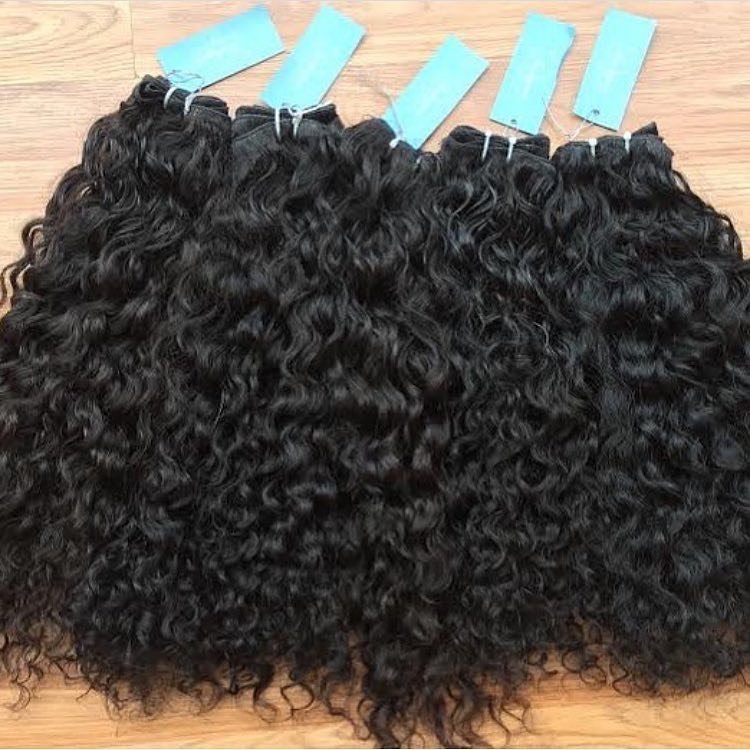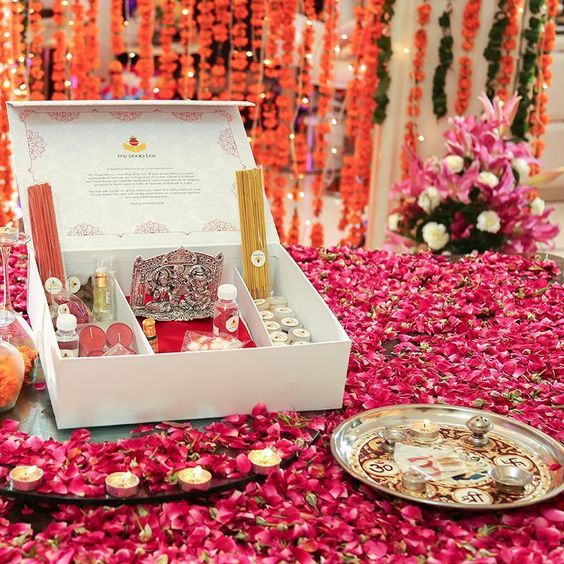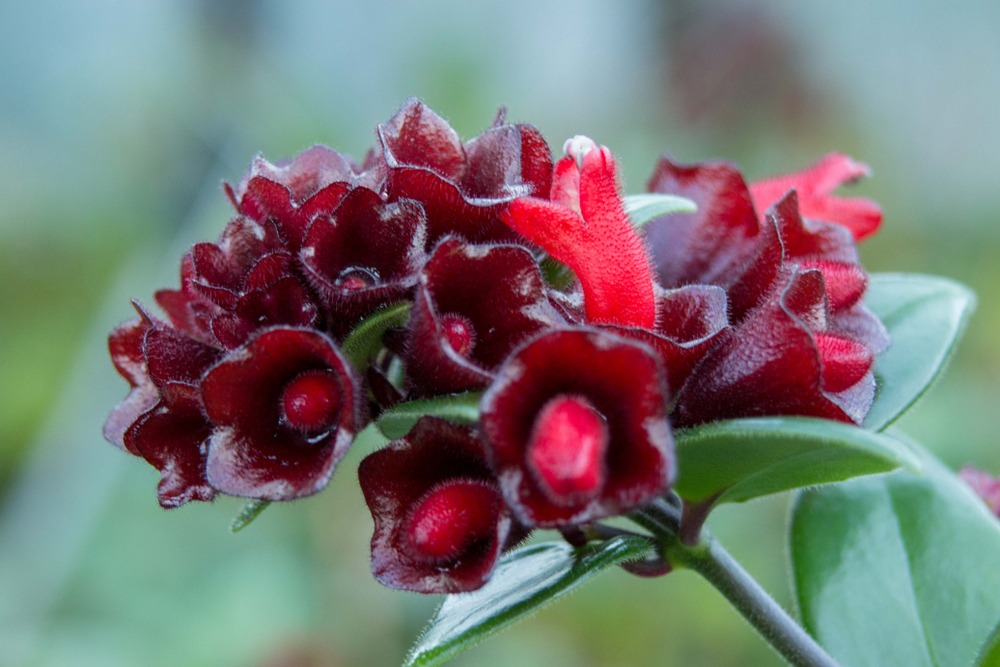Aeschynanthus Radicans is famous as the lipstick plant. Most people are curious to know whether lipstick is made using an organic method or an inorganic one. Well, the technique can be organic or inorganic. The lipstick plant is a popular, striking, and evergreen perennial, mostly grown as a houseplant.
Lipstick plant receives its name because it has tubular-shaped flowers that appear more like the color of a lipstick in red. This plant grows as an epiphyte on tree limbs and cracks in rocks in its natural environments in the tropics. Being a houseplant, it is necessary to plant it in a well-draining potting medium. With sufficient warmth, moisture, and protection against direct sun, you may have a very abundant bloom all year round, the most regular in summer and fall.
Varieties of Lipstick Plant
1. Variegated Lipstick Plant
This plant has medium-green leaves with golden-yellow speckles and tiny crimson blooms.
2. Mona Lisa
This cultivar has darker leaves and red-orange flowers, which radiate a nice contrast. This is another Aeschynanthus lipstick plant that offers beautiful tropical aesthetics wherever they are placed.
3. Aeschynanthus Curly
Features wavy or twisted leaves, and they are smooth in texture.
4. Rasta
Rasta has densely twisted leaves, similar to a Hoya Hindu Rope, but the same bright red blooms; it is also known as the Twisted Lipstick plant.
5. Black Pagoda
The other name is Zebra Basket Vine. This plant has purple-mottled, dark green leaves with a purple tint on the underside.
Tips for Maintaining Your Lipstick Plant
1. Soil
This plant needs soil that drains quickly, as it grows as an epiphyte in its native, moist environment. Root rot can occur if the soil retains(absorbs) too much water. Add sand and perlite to your potting mix to ensure proper aeration, which supports good drainage. Additionally, sphagnum moss can be used to make a Kokedama.
2. Temperature
This plant prefers temperatures between 65-75 degrees Fahrenheit, which is manageable given that most homes fall within range. Leaves will begin to fall if your temperature drops too much or if the plant is exposed to drafty windows, air conditioners, or abrupt temperature changes.
3. Light
Similar to how they naturally develop on other plants that are shadowed by the tropical canopy, plants require bright, filtered light. The leaves will burn if they get too much sunlight. Moderate sunlight is only suitable for plants. It will drop leaves and either not flower at all or flower very sparingly if it does not receive enough light.
4. Water
The lipstick plant does not want to sit in water because they are epiphyte. Root rot and leaf drop are caused by excessive watering. I only let the top few inches of my lipstick plant dry completely. I enjoy watering this plant with globes.
5. Fertilizer
It is necessary to fertilize your plant at least twice a month for better growth. Liquid fertilizers are preferable for them.
Aeschynanthus Radians: Key Insights
Common Name | Lipstick Plant |
Type | Vine |
Family | Gesneriaceae |
Native Range | Malaysia |
Bloom Time | Spring, Summer |
Bloom Description | Red |
Water | Medium |
Flower | Showy |
Sun | Part shade to full shade |
Lipstick Plant Care
Lipstick plant is considered a low-maintenance flowering houseplant. Some common requirements for growing a lipstick plant:
Place somewhere with bright, filtered light.
Maintain above-average humidity rates and defend against dryness due to the temperature.
Keep it evenly moist during the growing season, but do not overwater the plant since it is sensitive.
Apply a free-draining, loosely guarded potting blend.
During the growing season, feed daily with diluted fertilizer.
Lipstick Plant Potting and Repotting
When your lipstick plant outgrows its present container and gets rootbound, repot it. Early spring or after the abundant spring and summer bloom season are good times to do this.
Gently shake off the old potting mix as you carefully remove the root ball from the current container. Use pruning shears or sterilized scissors to trim any dead roots. Replant using fresh, loose, well-draining potting mix in a pot that is 1 to 2 inches larger than the previous one. Terra-cotta pots are ideal for this because they allow for better drainage and breathability.
Typical Plant Diseases & Pests
Although aphids, mealybugs, and mites can occasionally cause problems for every plant, lipstick plants typically don't have any significant insect problems. Horticultural oils or a water spray are the best ways to address and remove pests.
Allowing plants to become excessively moist can make them vulnerable to fungal issues and leaf spot. The potting material should be well-drained, and the leaves shouldn't be kept wet.
Best Way to Promote More Bloom
The winter brings lower temperatures and drier weather to aid buds in forming new flowers when the weather warms up in spring. After flowering, all the stems are pruned to about 6 to 8 inches to promote sound new growth and new blossoms. Not seeing lots of blooms could mean that there is too much shade, a lack of high-potassium fertilizer for houseplants, or just improper watering of your lipstick plant.
Frequently Asked Questions (FAQs)
1. What is the scientific name of the lipstick plant?
The scientific name of the lipstick plant is Aeschynanthus radicans. This plant thrives perfectly in moist areas and is also known as a houseplant.
2. What are the types of lipstick plants?
Mona Lisa lipstick plant
Aeschynanthus Radicans
Aeschynanthus Variegata
Curly lipstick plant
3. Is a lipstick plant indoor or outdoor?
A flashy, blooming vine that does well in low light and indoors, the lipstick plant is called because of its odd and vibrant flowers.






